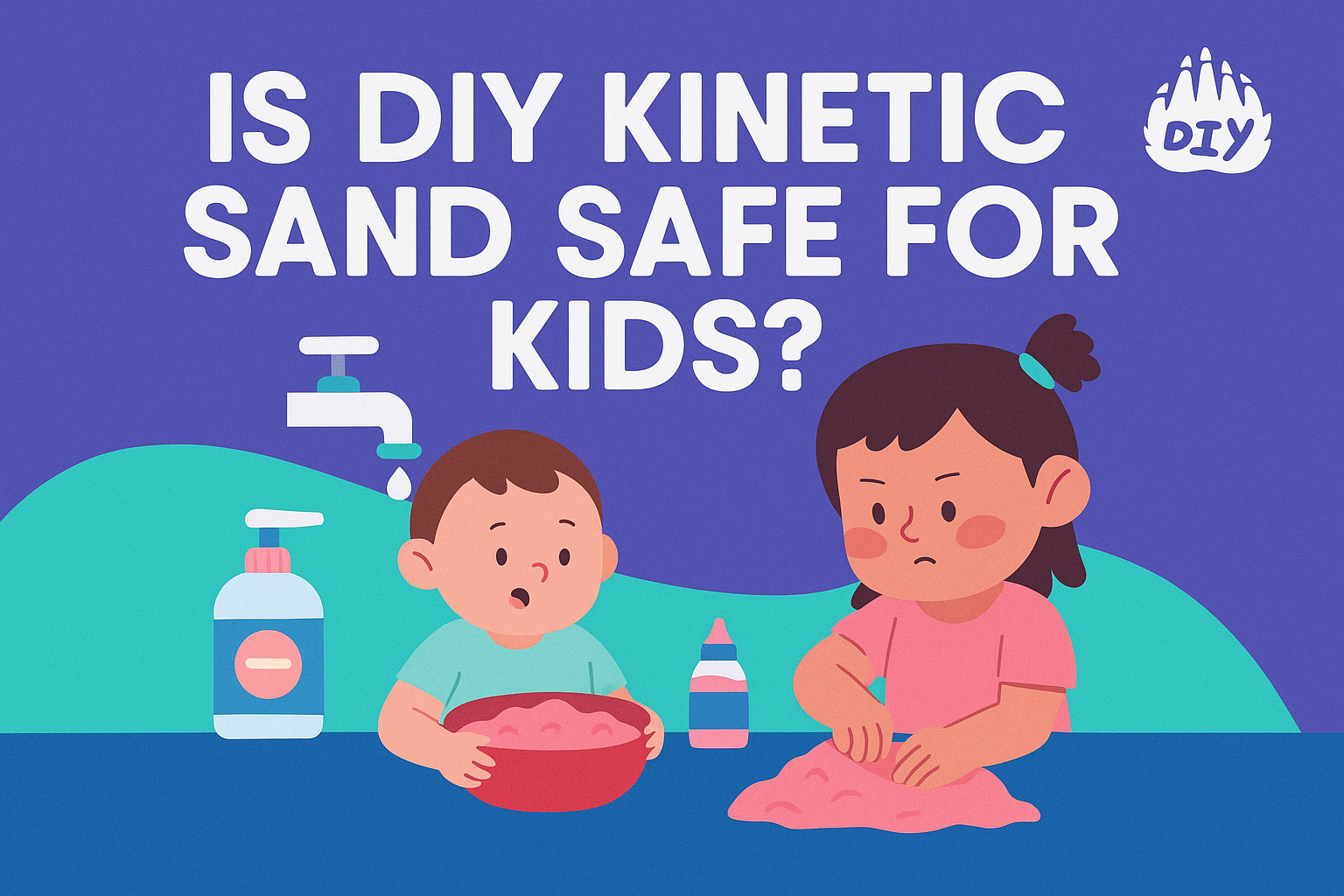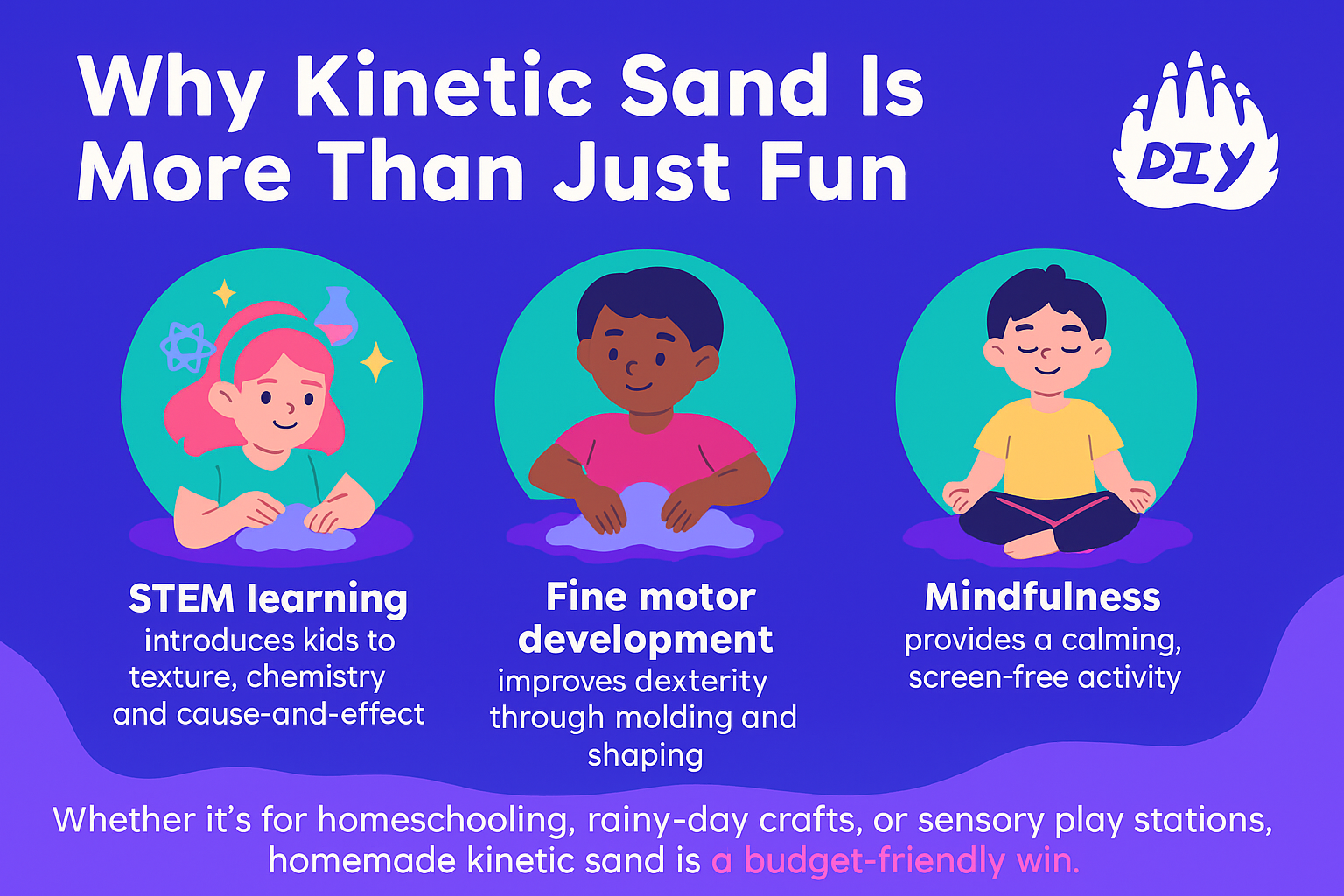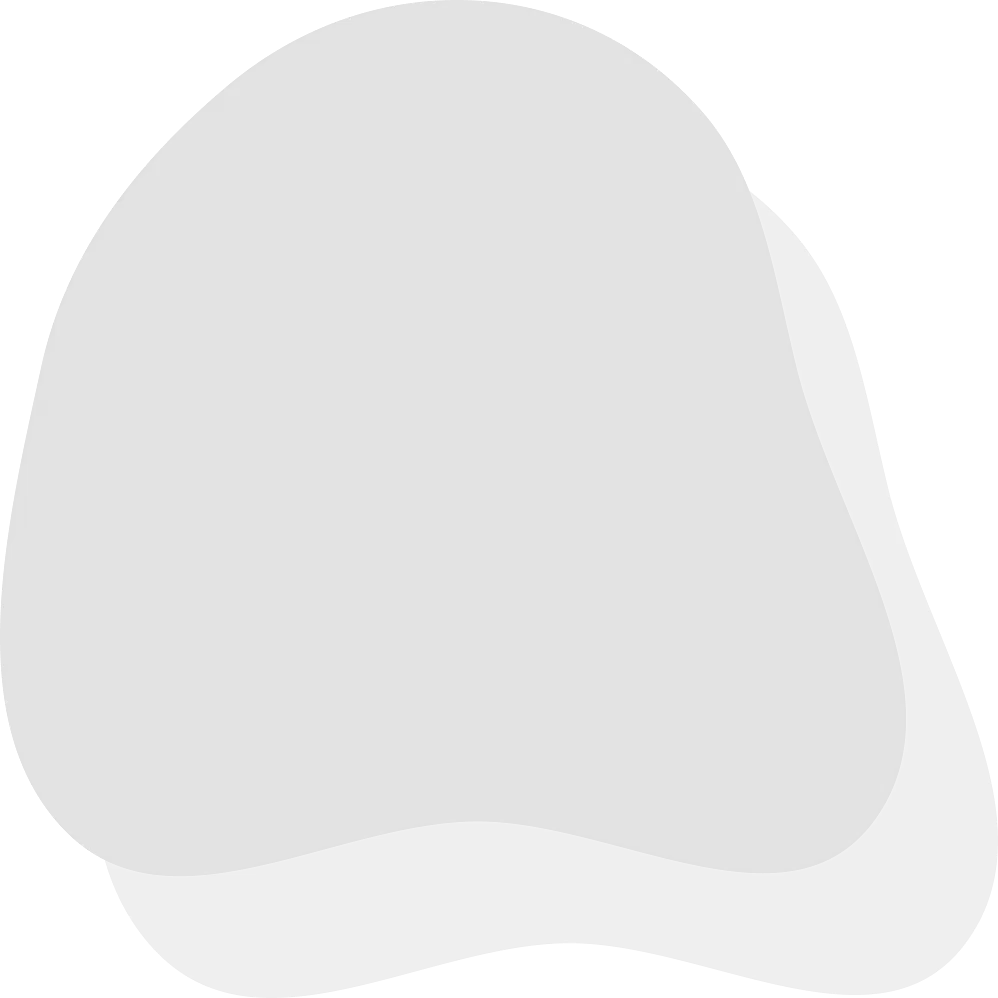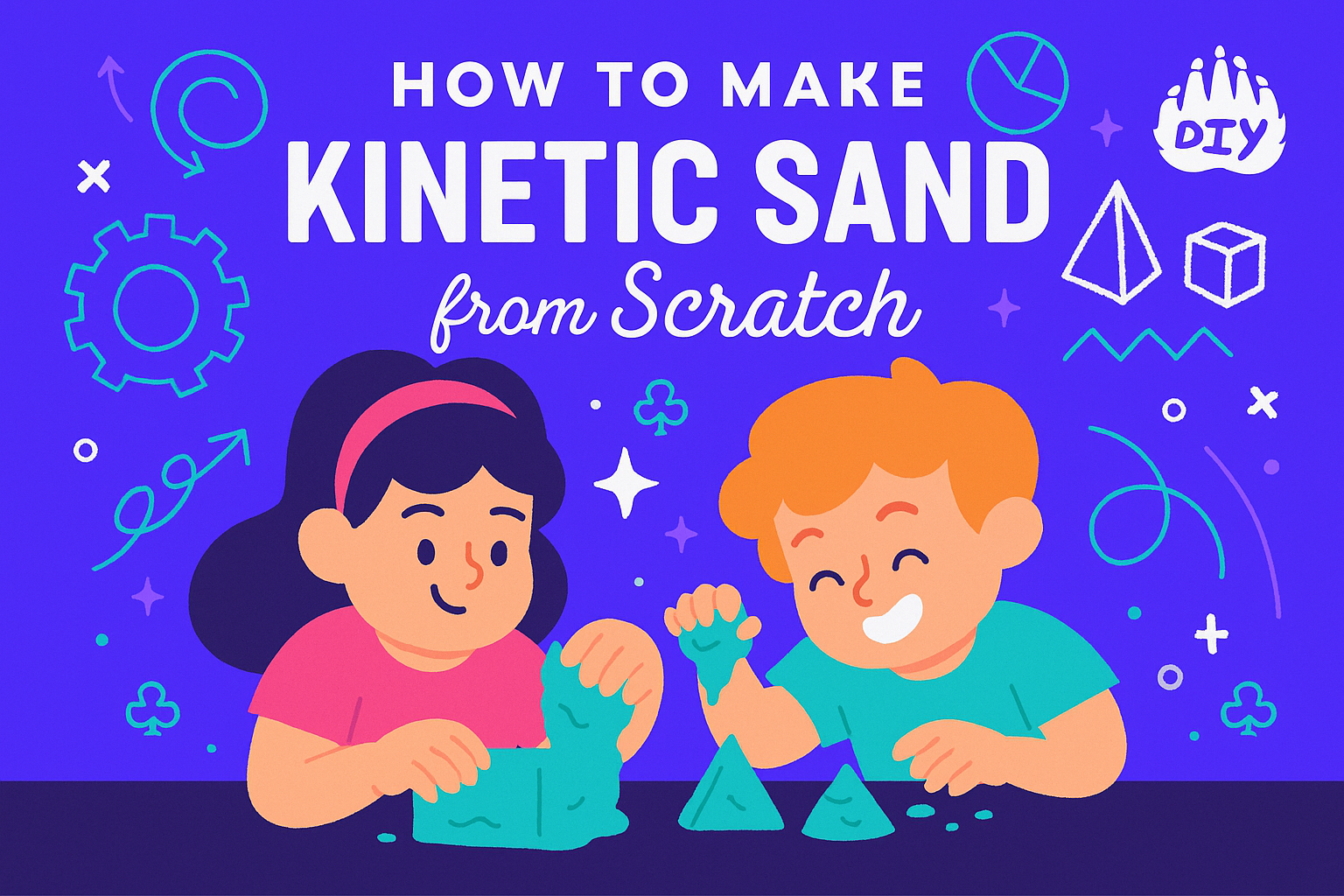Looking for a fun, screen-free activity that keeps kids entertained for hours? Homemade kinetic sand is the perfect choice. This soft, moldable, and endlessly reusable material isn’t just fun, it's also a hands-on way to boost sensory development, spark creativity, and sneak in a little science learning.
In this step-by-step guide, you’ll learn how to make kinetic sand from scratch using simple ingredients you probably already have at home.

What Is Kinetic Sand and Why Do Kids Love It?
Kinetic sand feels like magic grainy yet silky, firm enough to hold its shape, yet flowing like a slow-moving liquid. Kids can squish, sculpt, and mold it endlessly, without any rules or mess.
Parents and educators love it too because:
It builds fine motor skills
Encourages imaginative play
Supports calm, focused activity
The Science Behind Kinetic Sand
Kinetic sand gets its unique texture from a mix of fine sand and a binding agent like cornstarch and soap. The binding agent coats each grain of sand, creating a hydrophobic (water-repelling) effect. This makes the sand stick to itself but not to your hands so it’s easy to shape and mold.
Making it at home is a simple way to introduce kids to basic chemistry and sensory science through play.

Ingredients You’ll Need
You can make DIY kinetic sand with just a few household supplies:
Ingredients
1 cup fine play sand (clean, dry, sifted)
½ cup cornstarch or flour
1 tbsp dish soap or hand soap
2–3 tbsp water
(Optional) Food coloring, essential oils, or glitter. (here is a link to our favourite glitter)
Tools
Mixing bowl
Spoon or spatula
Airtight container for storage

Step-by-Step How to Make Kinetic Sand from Scratch
Step 1 – Mix Dry Ingredients Combine 1 cup of sand and ½ cup of cornstarch in a bowl. Stir well until the texture is even.
Step 2 – Add Soap and Water In a separate cup, mix 1 tbsp of dish soap with 2–3 tbsp of water. Slowly pour this into your sand mixture while stirring. You’ll notice it clump together and soften.
Step 3 – Adjust the Texture
Too dry? Add water a few drops at a time.
Too sticky? Sprinkle in more cornstarch.
You’re aiming for a soft, moldable texture that doesn’t cling to your hands.
Step 4 – Customize (Optional) Add a few drops of food coloring or essential oil for a personalized look and scent. Lavender and lemon are popular kid-friendly choices.
Fun Variations to Try
Rainbow Sand: Divide the batch, color each portion, then swirl them together.
Glitter Sand: Mix in child-safe glitter for extra sparkle.
Themed Sensory Bins: Create play setups like dinosaur digs, beach scenes, or mini construction sites.
Sensory Play Ideas
Homemade kinetic sand is perfect for:
Free play: Let kids squeeze, flatten, and shape it however they like.
Molding challenges: Use cookie cutters, cups, or plastic molds.
Learning games: Practice letters, shapes, or measurement skills.
This kind of sensory play promotes hand strength, tactile awareness, and creative problem-solving.
Storage & Shelf Life
Keep your kinetic sand in an airtight container when not in use. It can last for weeks or even months. If it starts to dry out, add a splash of water and stir.

Is DIY Kinetic Sand Safe for Kids?
Yes if made with non-toxic, kid-safe ingredients. A few tips:
Supervise young children, especially under age 3.
Use food-grade coloring and mild soap.
Avoid ingestion and encourage handwashing after play.
For wheat-sensitive kids, use gluten-free flour instead of regular flour.
FAQs About Making Kinetic Sand at Home (Tips, Fixes & Safety)
Can I use beach sand?
It’s better to stick with clean, fine play sand. Beach sand may contain impurities, moisture, or debris.
How do I fix sand that’s too wet or dry?
Add small amounts of the soap-water mix if it’s dry, or sprinkle more cornstarch if it’s sticky.
Is it safe for toddlers?
Yes with close supervision and taste-safe ingredients. Always prevent ingestion.
How do I make it more moldable?
Increase the soap slightly or adjust the sand-to-cornstarch ratio.

Why Kinetic Sand Is More Than Just Fun
Making and playing with kinetic sand supports:
STEM learning – introduces kids to texture, chemistry, and cause-and-effect
Fine motor development – improves dexterity through molding and shaping
Mindfulness – provides a calming, screen-free activity
Whether it’s for homeschooling, rainy-day crafts, or sensory play stations, homemade kinetic sand is a budget-friendly win.
Looking for more screen-free, curiosity-fueled activities? Join DIY and explore hundreds of hands-on projects that make learning fun.



